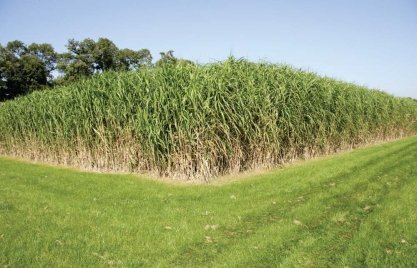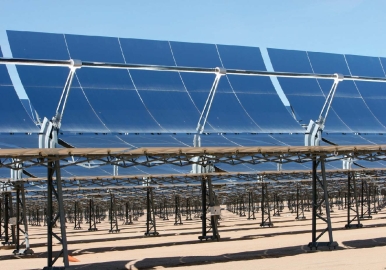A) are short-lived structures that have to be rebuilt about every 20 years.
B) are only able to contribute to about 5% of the electrical power throughout the world.
C) alter water control in ways that make it more difficult to irrigate crops.
D) eliminate farmland and wildlife habitats and often villages in the regions that are flooded.
Correct Answer

verified
Correct Answer
verified
Multiple Choice
Which one of the following produces the least air pollution?
A) an automobile burning hydrogen as a fuel
B) an automobile running on a hydrogen fuel cell
C) a Toyota Prius hybrid vehicle
D) a car running on natural gas
Correct Answer

verified
Correct Answer
verified
Multiple Choice
The production of hydrogen to power cars in the United States requires
A) nearly a million gallons of freshwater each day.
B) a net input of energy.
C) fusion reactions typical of nuclear power plants.
D) fermentation using water and sugars.
Correct Answer

verified
Correct Answer
verified
Multiple Choice
Power Tower and Solar Trough systems are both capable of
A) storing and using heat when there is no sunlight for several hours.
B) collecting sunlight even at night.
C) using their photovoltaic cells to generate alternating or direct current.
D) being used to generate electricity on modern passenger vehicles.
Correct Answer

verified
Correct Answer
verified
Multiple Choice
In 2012,a major driving force increasing the development and use of renewable-energy is
A) the ability to capture the energy of the wind,sun,and water.
B) concerns about climate change and costs that are now competitive with fossil fuels.
C) increased solar radiation and wind velocities over the past decade.
D) the ease with which solar and wind energies can be tapped in every region of the earth.
Correct Answer

verified
Correct Answer
verified
Multiple Choice
To meet the energy needs of all humans,we would need to capture
A) all of the sun's energy striking the Earth.
B) all of the sun's energy just reaching the outer atmosphere.
C) only about 1% of the sun's energy striking the Earth.
D) only about 1/10,000 of the sun's energy striking the Earth.
Correct Answer

verified
Correct Answer
verified
Multiple Choice
Given the problems of inconsistent winds,the best place to position new wind turbines would be
A) along railroad tracks,where there are few trees.
B) along rivers and streams,where there is less human interference.
C) in offshore locations where winds are more consistent.
D) in deserts,where few man-made structures are located.
Correct Answer

verified
Correct Answer
verified
Multiple Choice
 -This is a photo of a hardy perennial grass that can be grown just to produce ethanol to replace some of the gasoline used to fuel automobiles.Unlike using corn grains to produce ethanol,the use of this grass to produce ethanol requires
-This is a photo of a hardy perennial grass that can be grown just to produce ethanol to replace some of the gasoline used to fuel automobiles.Unlike using corn grains to produce ethanol,the use of this grass to produce ethanol requires
A) more fossil fuels than it currently saves.
B) additional fertilizers and irrigation.
C) prime soil that would otherwise be used to grow food crops.
D) enzymes that break down cellulose to produce sugars.
Correct Answer

verified
Correct Answer
verified
Multiple Choice
Around the world,photovoltaic technology is quickly being adopted to generate electricity in
A) large scale commercial power plants and on rooftop home units.
B) large scale commercial power plants but not yet on rooftop home units.
C) rooftop home units but not large scale commercial power plants.
D) small electronic applications such as calculators but not yet on rooftops or in commercial power plants.
Correct Answer

verified
Correct Answer
verified
Multiple Choice
Many of the 1.6 billion people who lack electricity live in rural regions where
A) nuclear energy is well suited.
B) hydroelectric energy is the best energy resource.
C) hydrogen fuel cells are best used.
D) solar energy is best used.
Correct Answer

verified
Correct Answer
verified
Multiple Choice
Solar trough technology converts
A) the ultraviolet light in sunlight directly into electricity.
B) the heat of the sun into steam to drive a turbogenerator.
C) sunlight into electricity which then produces steam heat.
D) the direct current generated by photovoltaic cells into alternating current.
Correct Answer

verified
Correct Answer
verified
Multiple Choice
In 2011,9.4 % of the energy used in the United States was renewable energy.Of that renewable energy,12.8 percent was from wind.Therefore,in 2011,how much of the energy used in the United States was from wind?
A) about 1%
B) about 5%
C) about 7%
D) more than 10%
Correct Answer

verified
Correct Answer
verified
Multiple Choice
About how much of the sun's radiation would strike the Earth if the Earth did not have its atmosphere?
A) about 10 times more
B) about twice as much
C) it would be about the same
D) about half as much
Correct Answer

verified
Correct Answer
verified
Multiple Choice
As of 2011 in the United States,about 8% of electrical power came from
A) burning biomass.
B) hydropower.
C) solar energy.
D) wind.
Correct Answer

verified
Correct Answer
verified
Multiple Choice
One of the advantages of solar generation over the use of fossil fuels is that solar power
A) can work equally well anywhere in the world.
B) generates electricity every hour of the day.
C) uses less expensive technology.
D) is sustainable.
Correct Answer

verified
Correct Answer
verified
Multiple Choice
Hydrogen in fuel cells powers automobiles by
A) generating electricity.
B) creating rapidly combustible hydrogen compounds.
C) generating changes in gas pressures that move pistons in car engines.
D) combining with equal parts of gasoline to create a fuel with extra octane.
Correct Answer

verified
Correct Answer
verified
Multiple Choice
Current ethanol production as a fuel does not significantly reduce greenhouse gas emissions because
A) of the amount of fossil fuels required to produce the corn used in the process.
B) the process of fermentation produces a tremendous amount of carbon dioxide.
C) the process of fermentation produces a tremendous amount of methane.
D) burning ethanol or gasoline contributes the same net amount of carbon dioxide in the atmosphere.
Correct Answer

verified
Correct Answer
verified
Multiple Choice
 -The technology in this photograph is used to capture the renewable energy of
-The technology in this photograph is used to capture the renewable energy of
A) nuclear fuel.
B) the sun.
C) the wind.
D) precipitation.
Correct Answer

verified
Correct Answer
verified
Multiple Choice
Which of the following is true or accurate about the transition to renewable energies?
A) Coal can continue to be used as long as we keep atmospheric CO₂ levels below 800 ppm.
B) Natural gas,which produces less CO₂ when burned,can serve as a "bridge energy" to the development of enough renewable energies.
C) At present none of the U.S.states has any requirements or goals for the transition.
D) Venture capitalists have invested very little in global renewable energy because of uncertainty about its effectiveness.
Correct Answer

verified
Correct Answer
verified
Multiple Choice
Using hydrogen to run a car is most like using
A) electricity stored in a battery.
B) natural gas as a source of fuel.
C) biogas as a source of fuel.
D) gasoline as a source of fuel.
Correct Answer

verified
Correct Answer
verified
Showing 41 - 60 of 92
Related Exams